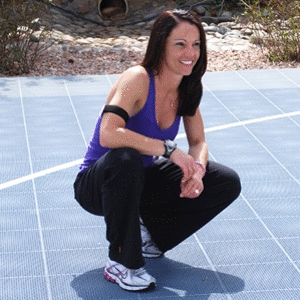Advertisement
Stretching should never be painful. Always stretch only to a point of mild discomfort, or tightness. Pain should not be a part of your stretching routine. If you are feeling pain while stretching, you may be stretching too intensely and this could cause injury. When stretching, slowly ease into the stretch and stop at the point you feel "tight". Hold this position for approximately 30 seconds. At this point try to relax the muscle being stretched as much as possible. If you feel the tightness lessen, then slowly move further into the stretch until you get to the next point of tightness. The saying "no pain, no gain" is counterproductive when it comes to stretching.
No. "No pain, no gain" does not apply. You should feel mild discomfort or general tightness worst case. I am a big fan of Active Isolated Stretching. AIS is actively moving through full range to tightness, and holding for 2 seconds max, then return and repeat. As the reps increase, so should the range of motion, PAIN FREE.
I would also highly recommend self myofascial release or foam rolling as safe alternative.
No, stretching should not hurt when you do it. If you start to feel pain when performing a stretch, you are probably going further then you need to, and your body is letting you know. In order to perform a stretch correctly, you should move slowly into the stretched position, and hold the position for approximately 30 seconds. You should feel a little tension on the targeted muscle, but not to where it is uncomfortable and you are unable to relax. Try stretching twice a day for each muscle group that you want to lengthen. A daily stretching program can help you achieve the results you want and decrease the pain you may be feeling due to tight muscles.
No, stretching should not hurt. Feeling pain during a stretch indicates that you have stretched too far. More is not always better, and achieving optimal results from stretching does not take as much effort as most people think. Getting a muscle to lengthen from stretching requires the delicate manipulation of tension. Our muscles have something called a stretch-reflex, meaning that when they get stretched it causes a reflexive contraction- this is a protective mechanism. If you move too far into a stretch, such as to cause pain, it will create a very large stretch-reflex. This large stretch-reflex will cause a build-up of tension in the muscle, making it virutally impossible to relax. To get the most benefit from a stretch, move into the stretch position until the first point of tension is felt in the muscle and hold for about 30 seconds. Once the muscle has relaxed, if you want to achieve more range of motion, simply move into the stretch a little bit more, stopping at the next point of tension and holding for 30 seconds. Repeat this process until you are satisfied with the result.
Continue Learning about Stretching
Important: This content reflects information from various individuals and organizations and may offer alternative or opposing points of view. It should not be used for medical advice, diagnosis or treatment. As always, you should consult with your healthcare provider about your specific health needs.



